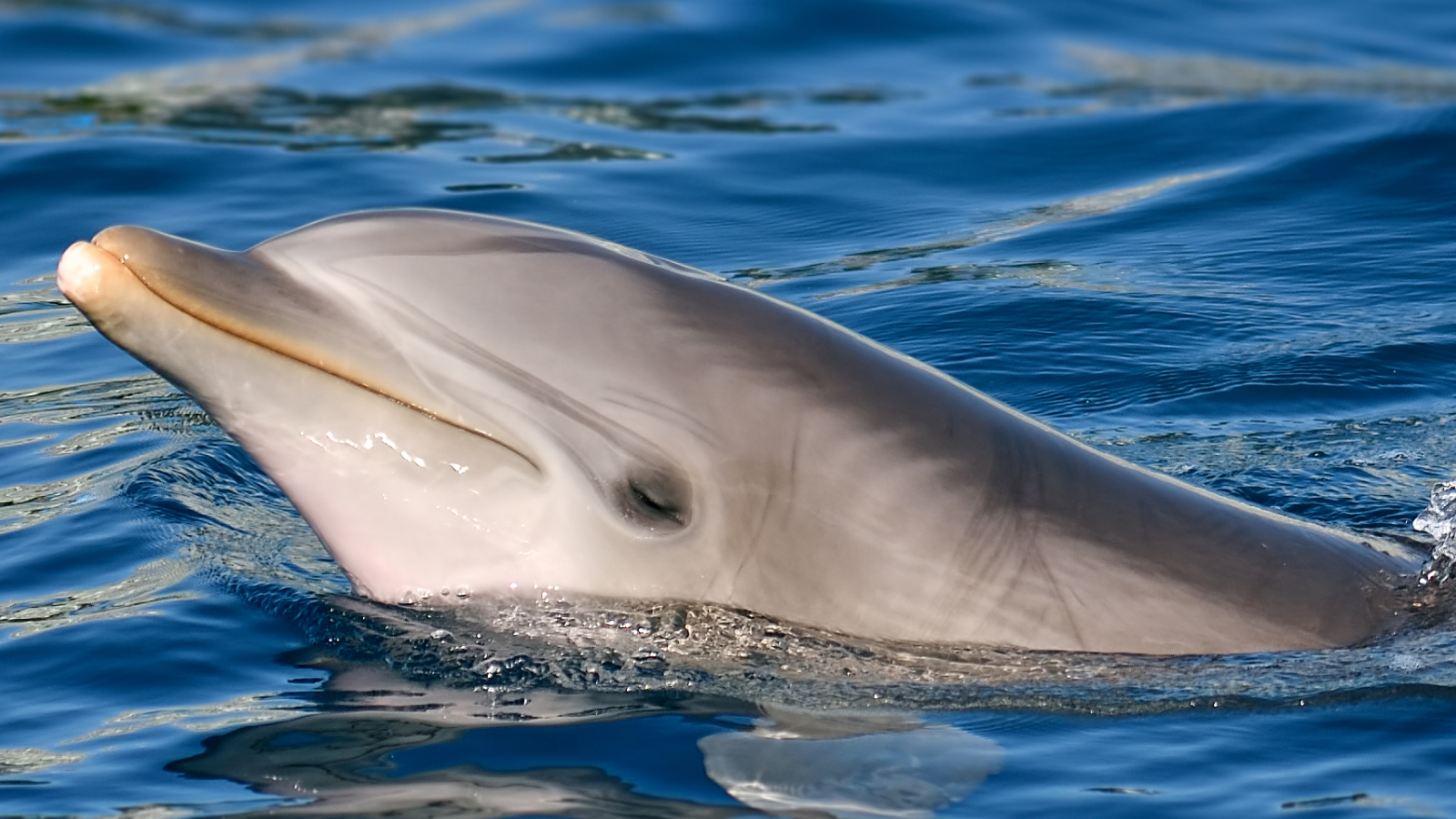
A solitary dolphin in the Baltic Sea appears to be talking to himself, potentially because he's lonely, according to a new study.
Bottlenose dolphins (Tursiops truncatus) are social animals that typically live in pods. But, in September 2019, a solitary dolphin, known as Delle by the locals, started hanging around the Svendborgsund channel, south of Funen Island, Denmark. This area is outside bottlenose dolphins' usual range, and no other dolphins were seen nearby.
Researchers had put down underwater recording devices to see how the presence of the solitary dolphin affected harbor porpoises. They were shocked when they heard Delle making so many noises. "Out of curiosity, I decided to add a recorder that captures actual sounds," lead author Olga Filatova, a cetacean biologist at the University of Southern Denmark, told Live Science via email. "I thought we might pick up a few distant whistles or something along those lines. I certainly didn't anticipate recording thousands of different sounds."
Over 69 days between Dec. 8, 2022 and Feb. 14 2023, the researchers detected 10,833 sounds, including several usually related to communication. These included 2,291 whistles, 2,288 burst-pulses — a rapid series of clicks sometimes associated with aggression — 5,487 low-frequency tonal sounds and 767 percussive sounds. The findings were published in a new study on Oct. 31 in the journal Bioacoustics.
Among these noises, the dolphin produced three distinctive whistles. "Bottlenose dolphins have what are known as signature whistles, believed to be unique to each individual, much like a name," Filatova said. "If we hadn't known that Delle was alone, we might have concluded that a group of at least three dolphins was engaged in various social interactions."
Related: Dolphins are 'literally acting like jerks' by beating up baby manatees
Filatova wasn't expecting to hear any vocalizations, certainly not noises associated with communication. "These sounds are traditionally considered communicative, meaning there should be at least two dolphins 'talking' to each other. But Delle was completely alone," she said.
At first, the scientists wondered if the dolphin might be trying to communicate with a local paddleboarder, but they also recorded the sounds at night time. "There were definitely no humans in the water," Filatova said.
For other experts, the results aren't entirely shocking. "Dolphins are very vocal animals, so I'm not overly surprised that this individual was still making sounds despite being alone," Thea Taylor, managing director at the Sussex Dolphin Project, who wasn't involved in the study, told Live Science via email.
"Dolphins rely on sound for key activities such as hunting and to sense their surrounding environment," she said, adding that they also use sound to communicate over large distances.
Why the solitary dolphin was so vocal remains a mystery. He could have been talking to himself or they might have been involuntary sounds triggered by a certain emotion, "much like how we sometimes laugh when we read something funny, even if no one else is around to hear," Filatova said.
Another theory is that he was calling out in the hope of attracting the attention of other dolphins nearby. "Though this seems unlikely," she said. "He had already spent three years in the area and would likely know by now that no other dolphins are present."
For Taylor, the idea that the dolphin's vocalizations may be involuntary emotional signals was the most intriguing element of the study. "This opens up so many questions about whether we can utilize dolphin communications to understand more about their behavior and emotions in the wild," she said.
Researchers don't usually record the sounds made by solitary dolphins. "They're seen as outcasts, as oddities, and no one truly expects them to produce any sounds worth documenting," Filatova said.
However, there is still much more to learn. "We still have some way to go before we fully understand why dolphins make the various sounds in their repertoire," Taylor said.







